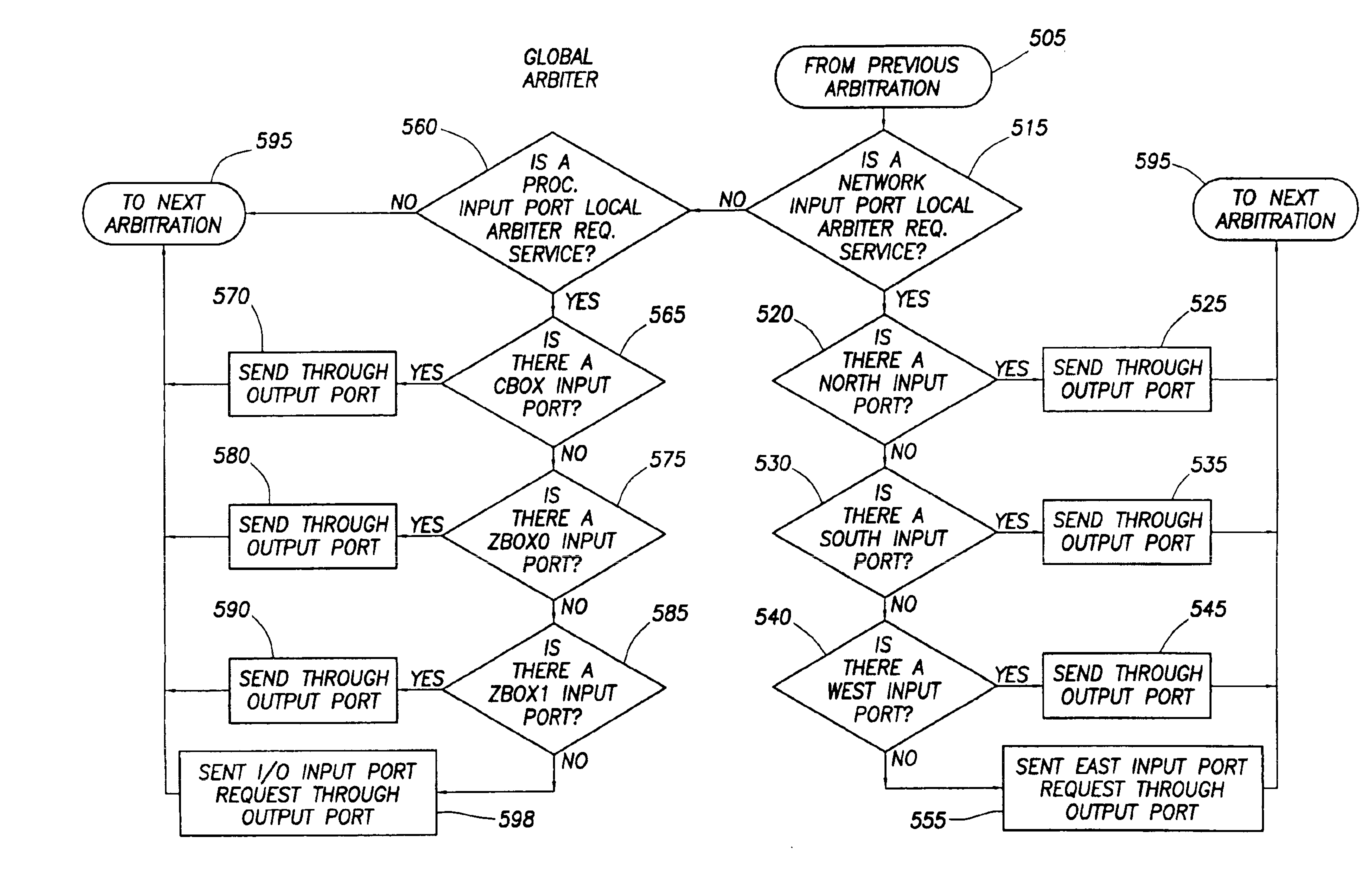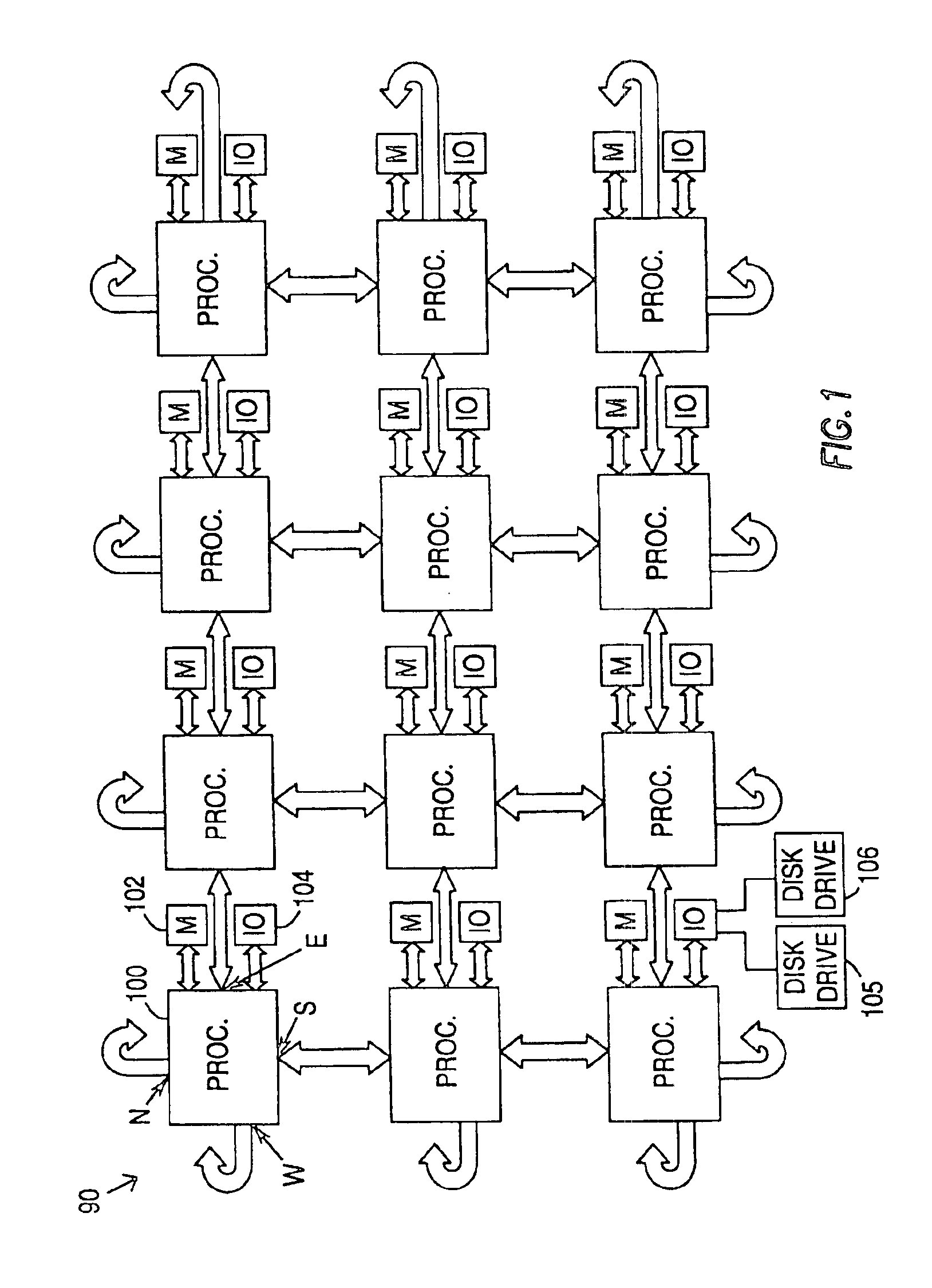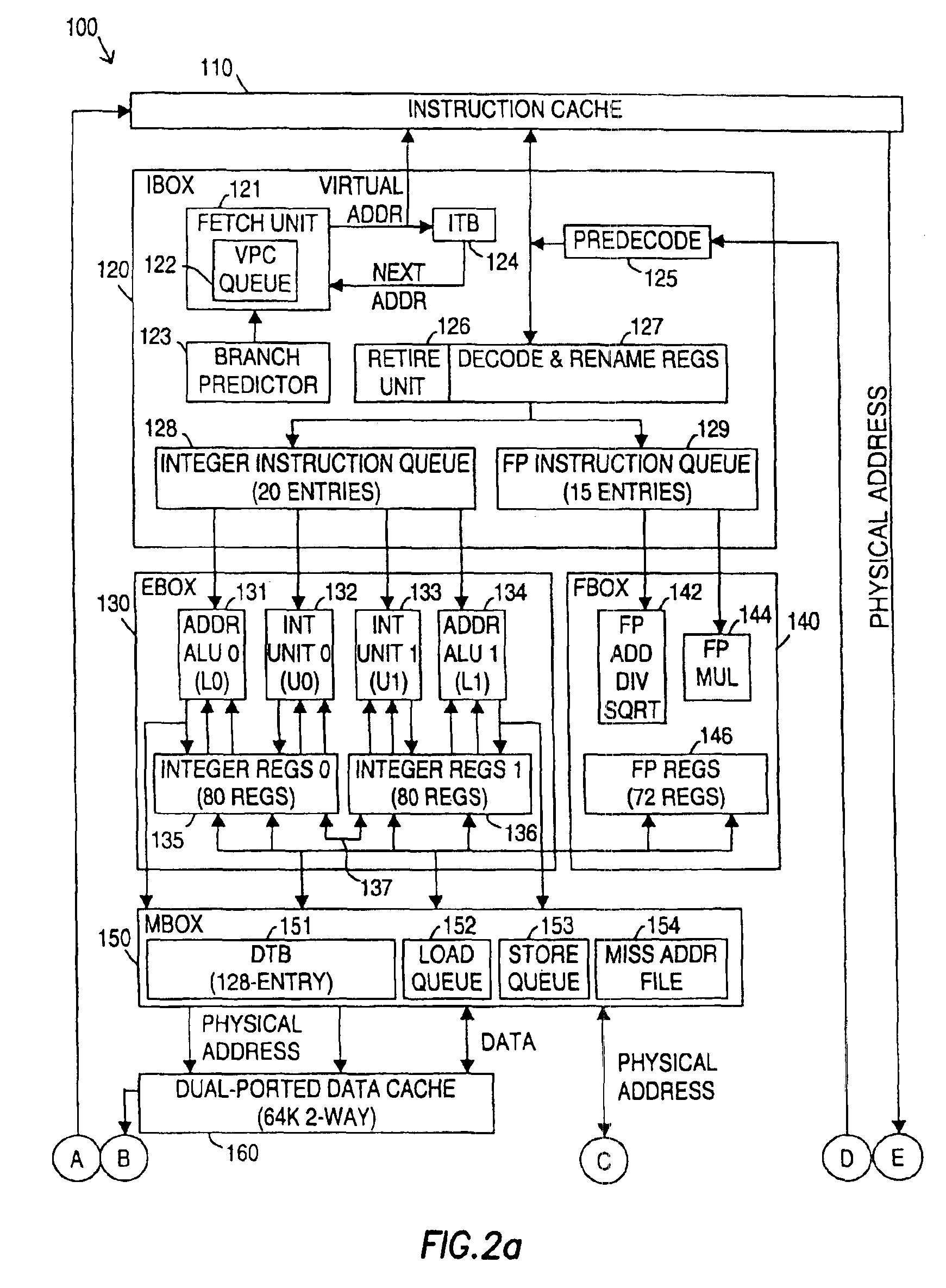Priority rules for reducing network message routing latency
a network message routing and priority rule technology, applied in the field of multiprocessing computer systems, can solve the problems of reducing system performance, slowing down program execution, and difficulty in scaling the size of smp systems beyond twelve or sixteen microprocessors, and achieve the effect of higher priority
- Summary
- Abstract
- Description
- Claims
- Application Information
AI Technical Summary
Benefits of technology
Problems solved by technology
Method used
Image
Examples
Embodiment Construction
[0024]Referring now to FIG. 1, in accordance with the preferred embodiment of the invention, computer system 90 comprises one or more microprocessors 100 coupled to a memory 102 and an input / output (“I / O”) controller 104. As shown, computer system 90 includes 12 microprocessors 100, each microprocessor coupled to a memory and an I / O controller. Each microprocessor preferably includes four ports for connection to adjacent microprocessors. The inter-processor ports are designated “North,”“South,”“East,” and “West” in accordance with the well-known Manhattan grid architecture. As such, each microprocessor 100 can be connected to four other microprocessors. The microprocessors on both end of the system layout wrap around and connect to microprocessors on the opposite side to implement a 2D torus-type connection. Although 12 microprocessors 100 are shown in the exemplary embodiment of FIG. 1, any desired number of microprocessors (e.g., 256) can be included.
[0025]The I / O controller 104 p...
PUM
 Login to View More
Login to View More Abstract
Description
Claims
Application Information
 Login to View More
Login to View More - R&D
- Intellectual Property
- Life Sciences
- Materials
- Tech Scout
- Unparalleled Data Quality
- Higher Quality Content
- 60% Fewer Hallucinations
Browse by: Latest US Patents, China's latest patents, Technical Efficacy Thesaurus, Application Domain, Technology Topic, Popular Technical Reports.
© 2025 PatSnap. All rights reserved.Legal|Privacy policy|Modern Slavery Act Transparency Statement|Sitemap|About US| Contact US: help@patsnap.com



